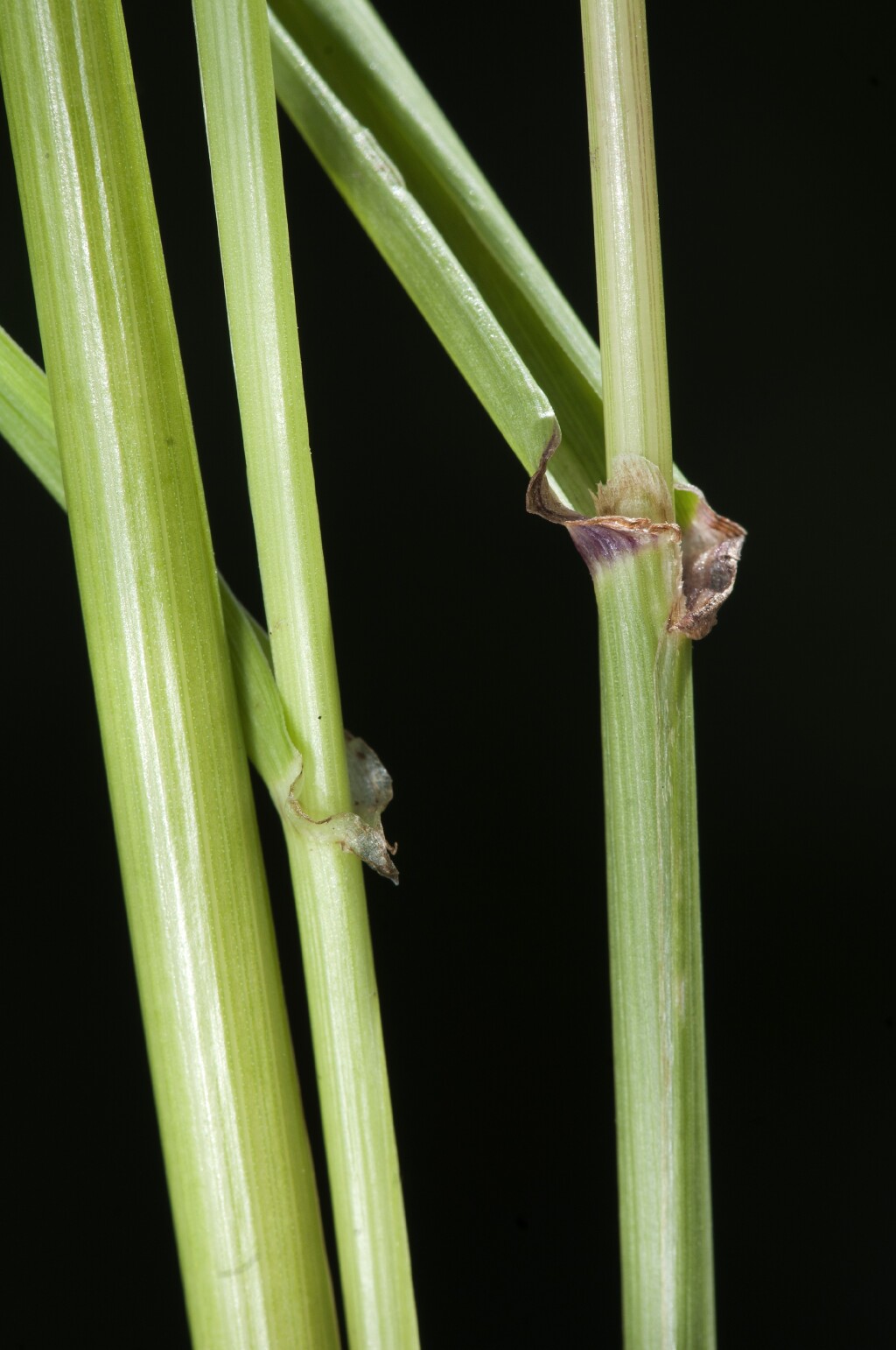Lolium
Glabrous annuals, biennials or perennials; leaf-blades flat or folded; ligules membranous, truncate. Inflorescence a slender distichous spike. Spikelets 2–25-flowered, laterally compressed, alternate, recessed into an adjacent groove along the axis of the spike; glumes 3–9-nerved, solitary in all but the terminal spikelet which has 2, shorter than to slightly exceeding the spikelet; lemma 5-nerved, rounded dorsally, sometimes awned; palea sub-equal to lemma.
8 species, from temperate Europe and Asia, including important pasture grasses; 6 naturalised in Australia, 5 in Victoria.
Fertile hybrids commonly occur between L. multiflorum, L. perenne and L. rigidum and back-crossing with the parent species may result in a near-complete range of intermediate forms. Consequently, hybrids are not included in the following key, but specimens of intermediate morphology should key to the most strongly emphasized parent species.
Molecular studies (e.g. Catalan et al. 2004) suggest that this and other genera (e.g. Psilurus, Vulpia) are nested within Festuca and a broader concept of that genus should be recognised. To date, the genera are maintained as distinct in Australia.
Walsh, N.G. (1994). Poaceae. In: Walsh, N.G.; Entwisle, T.J., Flora of Victoria Vol. 2, Ferns and Allied Plants, Conifers and Monocotyledons, pp. 356–627. Inkata Press, Melbourne.
 Spinning
SpinningCatalan, P.; Torrecilla, P.; Lopez Rodriguez, J.A.; Olmstead, R.G. (2004). Phylogeny of the festucoid grasses of subtribe Loliinae and allies (Poeae, Pooideae) inferred from ITS and trn L–F sequences.. Molecular Phylogenetics and Evolution 31: 517–541.




